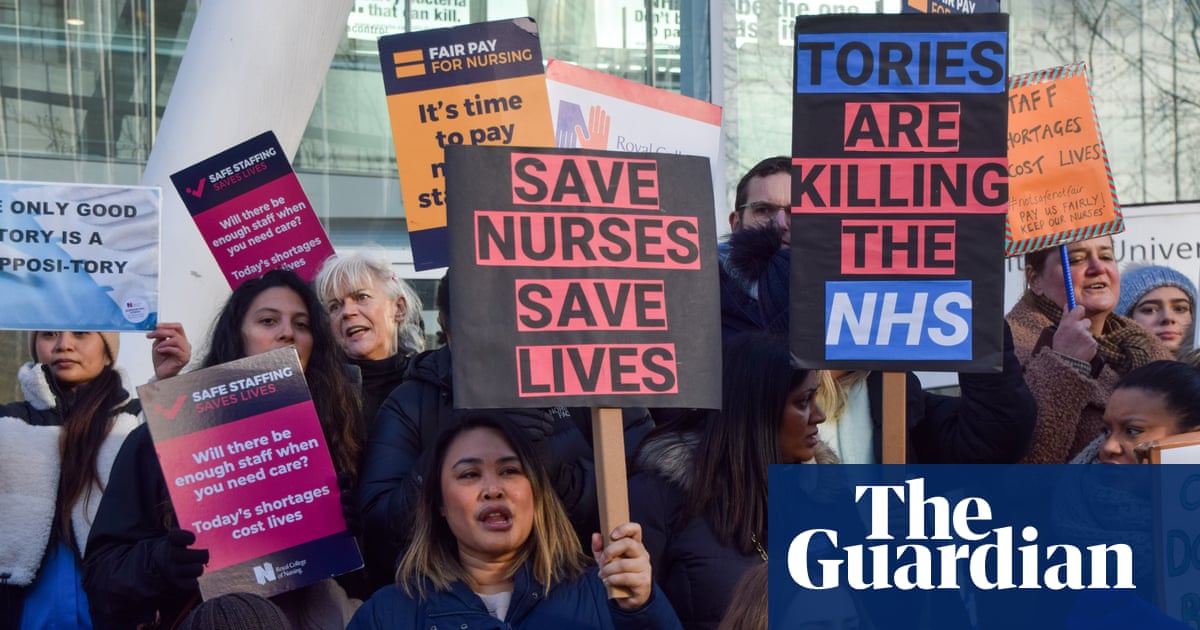
As an instant vignette highlighting just how much trouble the Conservatives might face in their English heartlands, Calum Miller’s 10 minutes or so of chats in the neat cul-de-sacs of Langford would be hard to beat.
Knocking on doors in the community on the fringes of Bicester, just north of Oxford, the Liberal Democrat candidate spoke to locals with all manner of political backstories and motivations, some who had previously voted Tory, Labour or neither, as well as those who had either backed Brexit or wished to remain.
All, however, had arrived at a common conclusion: this time they would vote for him, to try to defeat the Conservatives.
The idea of the “blue wall”, traditionally Conservative seats whose affluent, remain-minded populations were left aghast at the antics of Boris Johnson and Liz Truss, is not new. But on 4 July, a lot of Tory candidates could find out it is a bigger and politically broader phenomenon than anyone guessed.
Miller’s intended seat, Bicester and Woodstock, newly created under the boundary review, would have had a notional Conservative majority of about 15,000 in the 2019 election. However, according to constituency-extrapolated polling, Miller should win it.
If he does, the Oxfordshire councillor and public policy academic, who only entered politics three years ago, would not be lacking in local company. While the Lib Dems are cautious in their predictions and finite in their campaign resources, with a fair electoral wind a swathe of nearby ultra-true blue seats could also turn yellow.
These could include both Witney and Henley, formerly held by David Cameron and Boris Johnson, respectively. There are hopes for the new seat of South Cotswolds, part-formed of the previous Cotswolds constituency, which had a 20,000-plus Tory majority in 2019. There is similar talk that Stratford-on-Avon, the former seat of Nadhim Zahawi, could be in play.
One very clear sign of Bicester and Woodstock’s Tory pedigree is the Conservative candidate chosen to fight it – Rupert Harrison, a former chief of staff to George Osborne, who is now a fund manager and financial commentator. Such people are usually put into safe seats – but for the Tories, it is now a fast-changing landscape.
Striding around the comfortable 1970s and 80s homes of Langford, Miller stresses that his chances remain in flux, not least because he begins many doorstep conversations by telling locals they are no longer in the Banbury constituency, where Labour are the main challengers.
That hurdle cleared, he says, former Conservatives often express disillusionment with the government that is generally connected to the decline of public services.
“I‘ve got voters who have been waiting years for appointments, children whose health has deteriorated while they’ve been on waiting lists, just really awful stories,” he says. “That is sufficiently widespread that is really affecting the confidence and feel about the government.”
There is also anger over the records of Johnson and Truss – and in a slight departure from the blue wall-remainer cliche, this can also be the case for people who voted for Brexit.
June Parry, 74, backed Brexit and then voted Conservative in 2019 in the hope Johnson would finish the job. “I’ll never vote for them again,” she tells Miller. “During Covid, someone was living a nice life at No 10, weren’t they?”
Having previously believed she was still in the Banbury constituency, Parry had planned to spoil her ballot paper in protest. After a chat with Miller, she promises to support him.
A couple of streets away, Roberto Garcia, a 62-year-old retired former car industry worker, recounts being visited by the Conservatives and assured that Labour were the main challengers. He was not fooled. “I’ve got a tactical voting app on my phone,” he says. “I actually felt a bit sorry for him because I hammered him on Brexit.”
A former Labour and Tory voter, Garcia is also backing Miller, or as he puts it: “At the moment I’m a Lib Dem.”
The sheer extent of shifts in voter loyalties in the post-Brexit era means that whatever the polls and door-knocks say, seats like Miller’s are very hard to predict with certainty. It is, however, difficult to escape the sense of a probable political mauling for the Conservatives.
Robert Hayward, the elections expert who is also a Conservative peer, says that anyone who is surprised by this trend has perhaps not been paying attention to a gradual shift in loyalties from about 2015 onwards, as shown by both a cull of Tory councillors in many such places and stagnating parliamentary majorities.
“These areas might be perceived as archetypically Tory, and might have been in yesteryear, but in the last decade they have been anything but,” he says. “They have continued to return Tories, but not with the increased majorities of some other parts of the county.”
One potential risk for the Lib Dems, Hayward warns, could be sheer logistical over-stretch, as they try to fight ever more blue wall-type seats while also battling in the south-west, their more traditional heartland.
Thus far, however, the party’s campaign has been disciplined and seemingly effective, with its leader, Ed Davey, cavorting through a series of fun photo opportunities on paddleboards and waterslides, but also emphasising policy areas like care and sewage.
With postal votes starting to go out this week, a lot of contests will depend on how effectively the party has pushed the tactical voting message, one Lib Dem strategist says.
“The thing we need to do to get it across the line is we need to persuade people that they now live in a Lib Dem-Tory marginal, not a Tory-Labour one,” they say. “That could be the difference between winning or losing a seat.”












